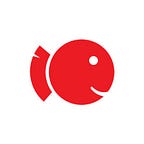The Devil is in the Detail — First, you’ve really gotta ask!
I was 3 months into my foundation at design school, feverishly sketching out a corridor and a dear friend feverishly sketching with me asks — why are we doing this?
Fast forward a year, and I was discussing a branding project with a college mentor. I had designed this volume of material, presented across 20 sheets and he posed the question — why did we need to rebrand?
My first project as a visual designer was to design a desktop application for a data backup product. We had been through the requirements and worked tirelessly for months to get the most perfect 640 X 480 px design appearing in the most elegant way on a Windows machine. When we present this to our stakeholders, the customer remarks that it looks great, but asks why they need to see all of it. We felt like something was amiss.
When I started my career, I really looked forward to the chance to re-design the hell out of everything, without asserting much thought into the ‘why’. Over the years, I’ve realized it’s something I need to hold back, especially when I start out on a new project.
At MonsoonFish, we have the privilege of working with a variety of clientele across industries, giving us the chance to see the spectrum. Given the business model, I have always felt that upfront clarity is an absolute necessity. While the expectation from us might be to dish out the beautiful and appealing screen, it’s on us as designers to think beyond what is the tangible, visible output.
Users have needs & these lead to goals. Design to help your user meet these goals.
Essentially, we design for people who have needs, these needs lead to goals and our design helps them meet these goals. While working on a project, we typically use an in-house framework that helps us define success, and only then, deliver a project. I’d like to think of the design process as a series of questions — some of them being utterly basic, while others probe into the existence of the product, service, or brand who is our customer. Asking these questions earlier on in the process tends to save a lot of time and heartburn later.
To begin with,
Why design, why now?
Something we love to start with is the business and its environment. Why do they think design is required? As a team (the client + us), we need to understand the reasons for doing this and what we’d like to achieve.
- Why do we need to design a solution?
- Why is this required now?
- What’s our hypothesis of the problem and the opportunity?
- What’s the business trying to achieve by designing this solution?
- What’s the value we deliver as a business?
- How do others deliver this value, and why would we stand out among umpteen others who do?
- What is success to both the business and the project?
Most of the above are some classic project management questions that we tend to look over, but these are required to understand why design is needed.
Who is the customer?
Understanding who it is that we deliver value to and why they would find our solution valuable.
- Who do we deliver value to and how do we plan to do it?
- What are their goals?
- How do they achieve them otherwise?
- What challenges does the client face?
- What opportunities arise in it for us?
Customers, like everyone else, also encounter challenges while trying to meet their goals. In most cases, they look to products to help them meet goals. Goals can be utility-oriented or aspirational, and they’re what the products we design help them meet. As designers, we need to step into their shoes, feel their pains and live their dreams, and then think nice and hard on whether our solution will add cognizable value to their lives.
What helps them achieve their goals?
Sometimes, customers already meet their goals through tech products or otherwise. It’s important to acknowledge this to know the stereotypes and formats they live and breathe.
- What does our customer do to meet their goals?
- How does the customer go about it?
- What are multiple ways we can help this customer achieve goals?
- What do we need to do today, given their needs, capabilities, and the business environment?
- What is success to the customer and how can we measure it?
How do we communicate?
The question here is what the customer will find instantly trustworthy.
- How do we communicate value?
- In what format will your customer see, hear, or feel the delivery of value?
- What will delight your customer?
The above questions are typically spread across a project. We often use this in 2-day discovery workshops to get a lot of the groundwork done, or what we refer to as ‘Cracking a Project’. Often we’ve observed that this brings in a lot of clarity into why we are solving a problem and helps with ruthless decision-making later on in the process.
Are these newfound? Definitely not! I see a lot of these framed in formats like sprints, agile design, and so on. It’s really how we use them and ensure we do so that we can design products that impact user lives. I’ll dive deeper into the specifics in my next few pieces.
The article has been curated by Rohan Baruah, Head of Projects at Monsoonfish with edits by Arun George, Digital Presence Manager.
You can follow Monsoonfish on Twitter/ Instagram / Facebook / LinkedIn.
Cover image sourced from Unsplash.
